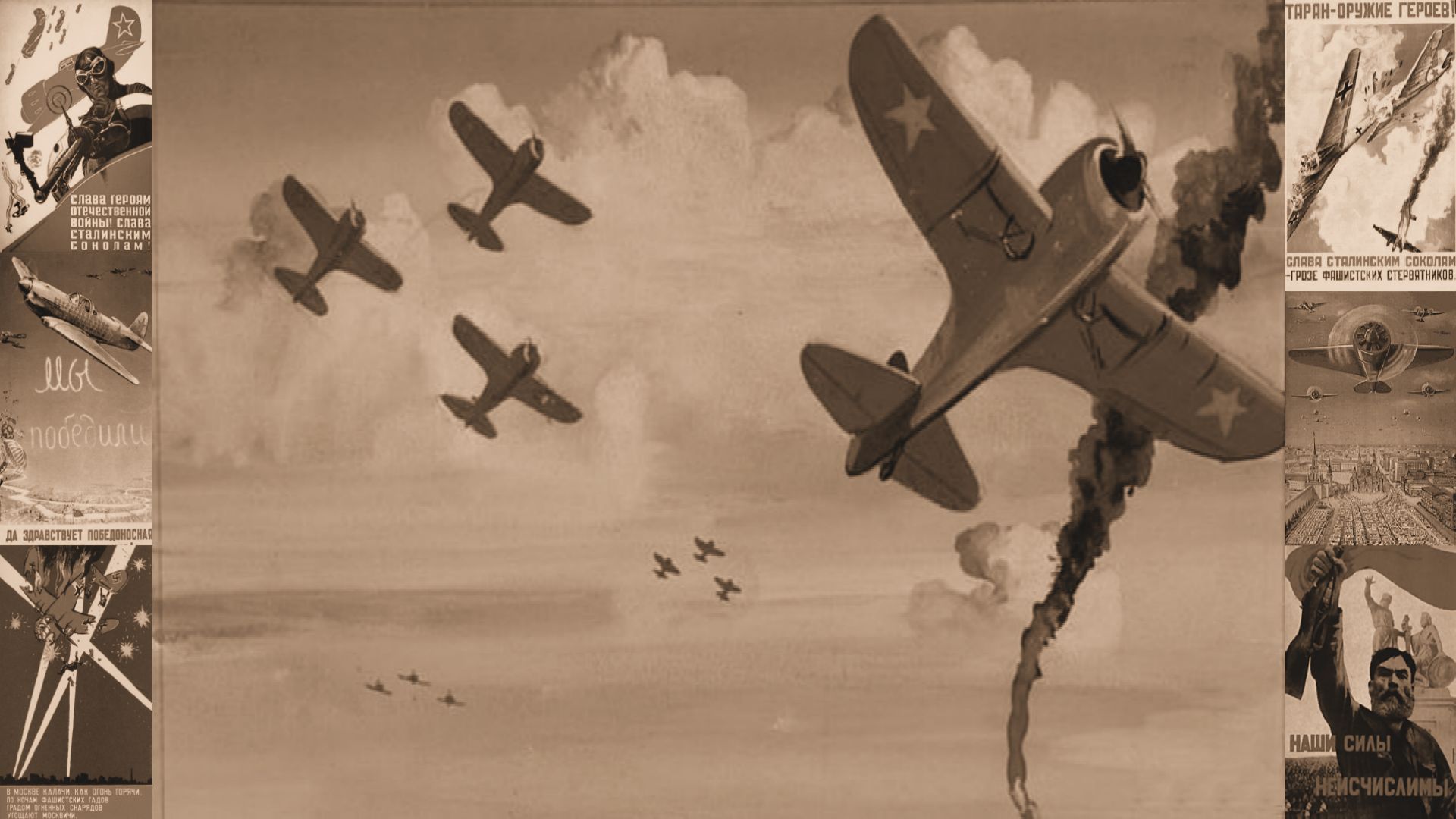The Russian Polikarpov I-16 fighter was introduced in the mid-1930s and formed the backbone of the Soviet Air Force at the beginning of World War II being the world's first low-wing cantilever monoplane fighter with retractable landing gear to have attained operational status. The 1-16 first flew in December 1933. At a time when many nations were still flying biplane fighters the 1-16, was an advanced design and one which incorporated a then-unique feature for a monoplane fighter aircraft, namely a retractable undercarriage. A tail skid took the place of the more conventional tail wheel. It resembled its predecessor, the 1-15, a biplane of similar squat design which, in 1935, established the new world altitude record of 47,818 feet. The diminutive fighter, nicknamed "Ishak" ("Donkey") by Soviet pilots, prominently featured in the Second Sino-Japanese War, the Battle of Khalkhin Gol and the Spanish Civil War, where it was called the Rata ("Rat") by the Nationalists or Mosca ("Fly") by the Republicans. The Finnish nickname for I-16 was Siipiorava ("Flying Squirrel").
Back to Top
Development
While still working on the Polikarpov I-15 biplane, Nikolai Nikolaevich Polikarpov began designing an advanced monoplane fighter. It featured cutting-edge innovations such as retractable landing gear and a fully enclosed cockpit, and was optimized for speed with a short stubby fuselage and a Wright Cyclone radial engine in a NACA cowling. The aircraft was small, light and simple to build. The first prototype designed by Nikolai Polikarpov was powered by a Bristol Jupiter engine licence-built by the Russians as the M-22 450 hp radial. There followed in 1934 a second prototype, this time powered by a Wright Cyclone 725 hp radial engine. The latter licence-built engine was called the M-25. Using a slightly up-rated M-22 engine, the Polikarpov 1-16 Mark 1 began to equip Russian fighter squadrons by 1935. Subsequent Marks varied in power plant and armament, using quadruple 7.62-mm ShKAS machine-guns and some two 20-mm wing-mounted ShVAK cannon. Earlier Marks such as the Mark 10 had open cockpits, which must have made operating in the depths of the Russian winter extremely unpleasant at any altitude, while later ones had cockpit canopies. Marks went through 17 and 18 to 24B, the last of the line, and powered by the l,100hp M-63 engine. In this version the I-16 was capable of 326 mph a respectable speed considering that ten years had elapsed since the aircraft's first flight.
Back to Top
In Service
The I-16's served with the Republicans in the Spain, the Chinese against Japan in 1937-38, with 250 I-16 Type 10s being supplied to China. This model added a second set of 7.62 mm (0.30 in) ShKAS machine guns, armor behind the pilot, and had a slightly upgraded 560 kW (750 hp) M-25 engine. In was the primary fighter in the conflicts against both Japan in the Nomonhan Incident where in August 1939, of the 500 I-16s deployed to the fighting at Nomonhan, approximately 112 were lost during the battles of Khalkhin Gol (Nomonhan Incident), of which 88 were destroyed in aerial combat, primarily against the all metal IJAAS Ki-27 fighters and against Finland during the First Winter War in 1939-40. When fighting the Luftwaffe, its main opponent in the sky in 1941 was the German Messerschmitt Bf109E. The I-16 was slightly more maneuverable than the early Me109s in Spain and could fight the Bf109E on equal terms in turns. The German aircraft, however, outclassed its Russian opponent in service ceiling, rate of climb, acceleration and, crucially, in horizontal and diving speed, due to better aerodynamics and a more powerful engine.
The I-16 equipped fighter squadrons until mid-1943 till it was replaced by more modern types but then served on as a fighter bomber, for which the design proved most suitable. In this role it carried bombs or six 82-mm RS-82 rocket projectiles beneath its wings.
Some 20,000 I-16's are reputed to have been produced.
Back to Top


